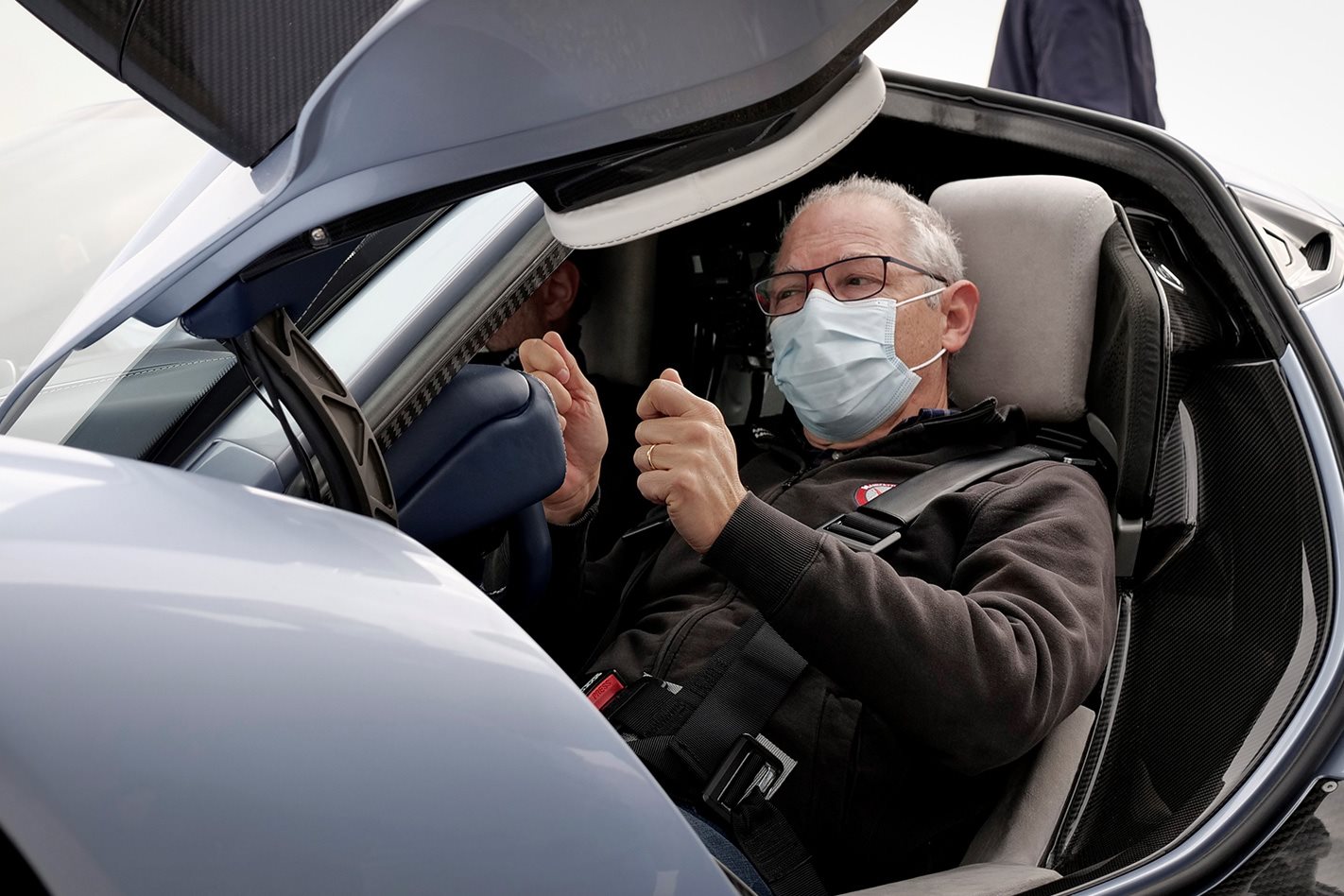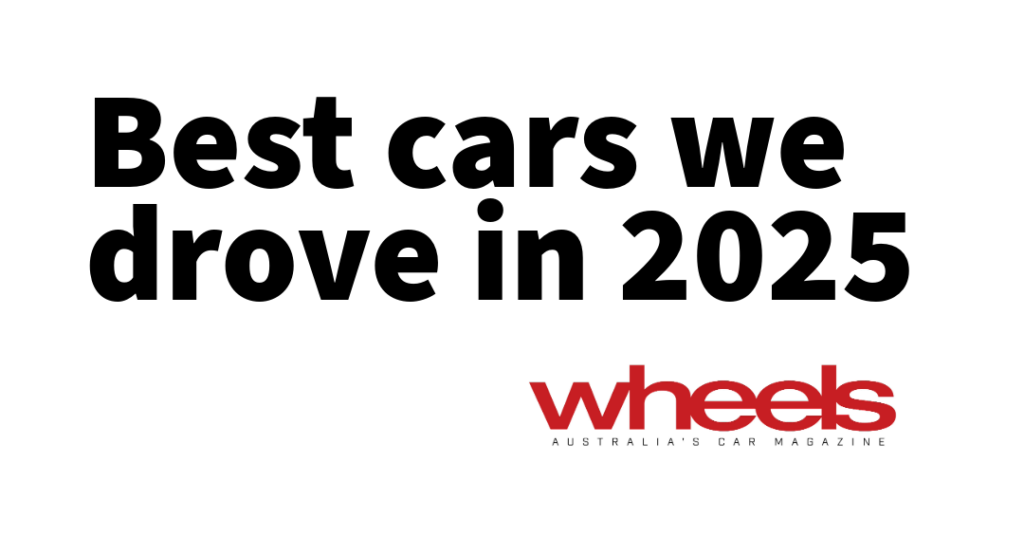Paolo Garella is like a cat. Throughout his 35-year career as an engineer, he has lived many lives, any one of which would be the highlight of most people’s resume, working with not only automotive royalty but actual royalty. Despite his success, his story is still being written. The 61-year-old generously donated his time during a long drive from his Italian home to talk MOTOR through his journey thus far. And what a journey.
Born in 1959, Garella grew up in a small town south of Turin in an automotive family. His father introduced him to the wonder of cars and his uncle was the general manager at Ducati. But it was an annual local event that would light the path ahead. “One thing that very strongly inspired my career was every year there was the Turin Motor Show. It was always a dream to go and see those fantastic cars and one year Pininfarina [showed] the Ferrari Pinin. For me that was a shock, I thought ‘this is what I want to do’. The car is important in my memory.”
Having graduated from the Politecnico di Torino as a mechanical engineer, Garella began working for Goodyear as a test engineer at its Mireval proving ground in the south of France. “I really learned what the car should do. It was really very, very important for what I’ve done since, to be able to judge a car, to drive everything that was on the market for four or five years. There were people from France, from Belgium, from Germany, it was an incredible mixing pot of competence and ideas of the handling of a car, the comfort.”
The work was varied, Garella’s image archives showing everything from a Peugeot 309 GTi to a Ferrari F40 to a giant mining truck. His main project during this time was the creation of a new wet handling circuit at Mireval, a crucial component in tyre development.
“If I had to pick a memory from Goodyear I will pick the work we did on the wet handling track. That was an incredibly advanced project that involved tens of people from the two sides of the ocean. So it was a little bit of the true starting point of my career as a manager, to be able to put together a group of incredible people to reach an extraordinary achievement.”
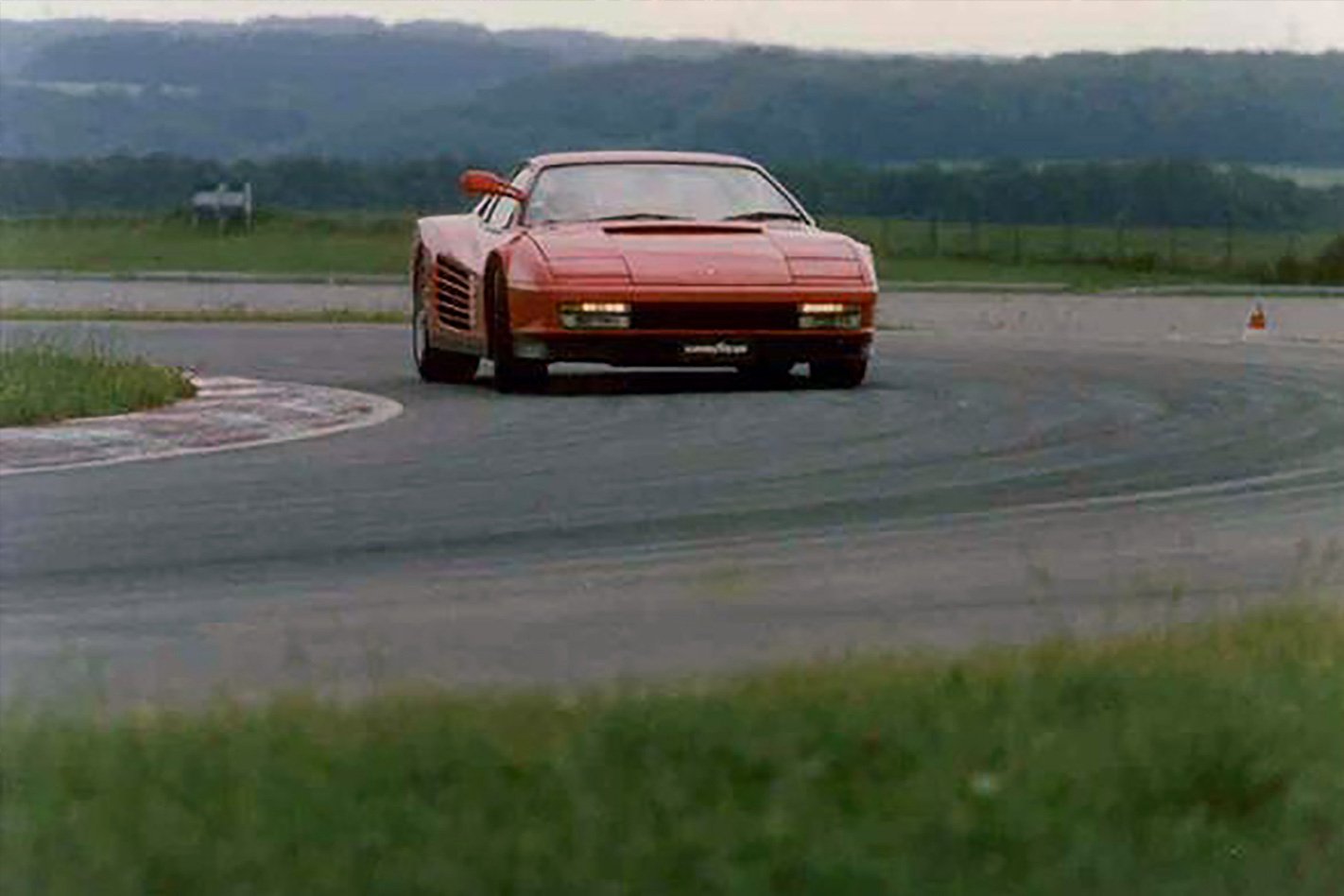
From there Garella joined Albatech, where he worked on unusual concept projects like the electric Bertone Blitz and two-stroke Pininfarina Ethos – “I went to drive that car on the circuit I developed in Goodyear and that is a great memory” – before becoming technical director for Alba’s Group C sports car team.
In 1992 Garella made his biggest move, to Pininfarina, where he would spend nearly the next two decades working on some of the world’s most exotic machinery. Usually by tearing it apart. Garella’s primary role was to head Pininfarina’s special projects division, which was kept extraordinarily busy by its main client, the Royal Family of Brunei.
The Sultan of Brunei’s car collection is the stuff of legend. Said to contain anywhere between 5000 and 10,000 cars, over the next five or six years Garella and his team would create some of the more interesting additions. “When I joined Pininfarina already the work was around the Brunei cars and a few months after I joined they contacted us to have a direct deal. Before, all the cars were sold through this guy in Singapore. After I joined we started to sell the cars directly to them and we developed very strong links, developing the cars and discussing with them what kind of car they would like. From then it was a crazy five years, six years [during] which we’re building more than 60 cars every year.”
The combination of Pininfarina’s engineering skill and the Royal Family’s almost infinite resources made almost anything possible. For instance, a lack of right-hand drive availability wasn’t going to stop them having their favourite cars with the steering wheel on the ‘correct’ side.
“The first project we did directly for them were [Ferrari] 288 GTOs that were made right-hand drive, [and] we increase the power. It was fun because two cars were sent from Brunei to be transformed but two other cars I went to buy them. Honestly, the 288 was an easy one, very easy. The F40 was easy because it was a 308 [base], so therefore we could buy the steering rack. The only thing was that because of the width of the tyre we had to redesign the pedals because the space on the right side was not as wide [as] on the left side.
“The toughest one we did was the Porsche 959. Really, really tough. That was completely re-engineered on the front, we had to re-do the fuel tank, that was a really big pain. I think we did four of those. All the projects had their difficulties. One of the big things was air-conditioning because all those cars were not really thought of to have strong air-conditioning. And for them in Brunei one of the key things was the air-conditioning, so every time we had to spend a lot of time and tuning,” he explains.
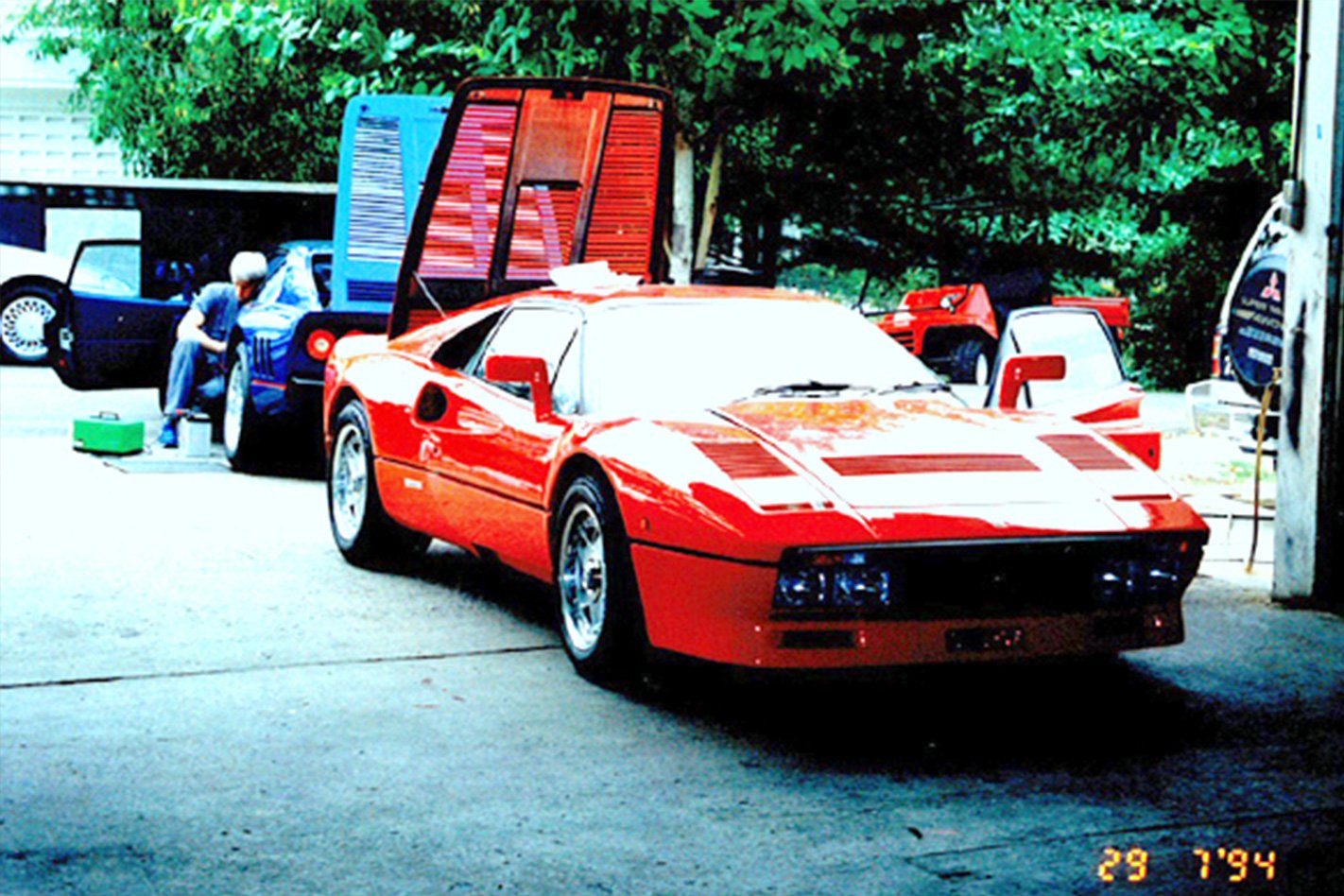
As you might have surmised, these transformations were not quick backyard jobs. Many of the cars were repainted (hence the existence of blue and black 288 GTOs and yellow, grey and green F40s) and then subjected to OEM-style quality tests, including hot weather and water durability.
“It was a full OEM development process and, frankly, some of the projects like the [Ferrari] 456 four-door and estate, that was a true development in which we did benchmarking activities, we reengineered completely the door system of the cars, the chassis was completely modified, the gearbox.”
The 456s were particularly popular with the Royal Family, Pininfarina delivering 42 (!) examples in various guises, all with a bespoke automatic transmission.
“When we started deliveries the Ferrari 456 didn’t have an automatic transmission yet, so we adapted the Porsche 928 transmission and made some improvements. When Ferrari came out with their transmission the Royal Family didn’t like it and continued to ask us to modify 456 with our automatic.”
Brunei 456s came in many shapes – two-door coupes and convertibles, four-door sedans and five-door wagons – but it wasn’t the only car to be re-’boxed.
“We did the same thing on the 550 [Maranello]. That was a great development. We used the Mercedes transmission, I think was six-speed, and the drivability of that transmission was fantastic. Unfortunately, that was towards the end of the relationship with them but we did a lot of work in transmissions. We did a Ferrari 355 with a semi-automatic transmission, we did Testarossa with semi-auto, we did the XJ220 with semi-auto and these were developed together with Prodrive in England.
“They were hybrid systems that were using pneumatic and hydraulic actuation, pneumatic for the gear engagements and hydraulic for the clutch control. Because the level of the electronics was not as refined as today, it was really a lot of tuning to make it work. Very frankly, some of the applications, the one on the XJ220 for example, was never fully reliable [and] need continual adjustment. There were different levels of refinement depending on the donor car.”
Despite its capricious nature, the XJ220-based ‘Pininfarina J’ holds a special place in Garella’s heart. “My favourite project was the Pininfarina J, because on that car I still have my personal speed record. I did 220mph (355km/h) in England. It was really incredible.”
That’s almost as incredible as some of Pininfarina’s more obscure creations. There were the Ferrari FXs, three Testarossas (and, later, three 512s) restyled and rebodied in carbon fibre with more power and the aforementioned semi-auto gearbox. There was the Aston Martin AM3 and AM4 (three units of each), the Bentley Continental R-based B2 and B3 (13 of each), a GMC Suburban with camouflage paint and one-way glass, and “a Ferrari 456 with night vision so you could drive it at night without the lights on.”
Um, pardon?
“It was very simple. We had five screens in the car and we had six cameras around the car and we had an infra-red illuminator mounted on the bumper so we had a mix of day and night vision cameras. In the night you would switch on the infra-red illuminators that would light the surroundings and you could drive at night by looking at the screens.”
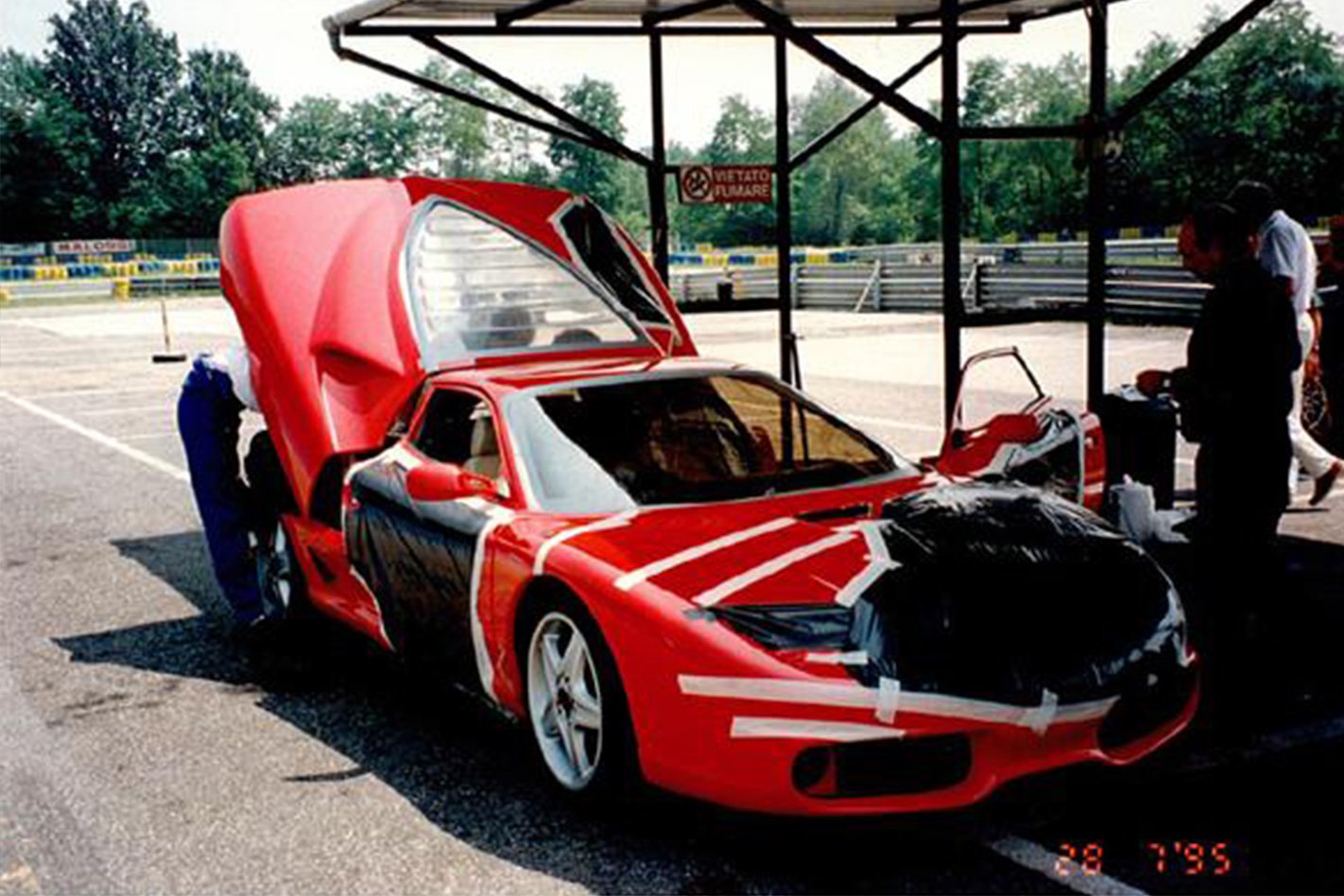
Every two months Garella would fly to Brunei for two weeks accompanying his latest creations but it was far from a holiday. “It was very stressful. Basically, there were two weeks where you would not sleep much and you were always on call. The moment the car was landing in Brunei they wanted the car immediately, that was the big thing. The car had to be ready immediately for [Prince Jefri] to be driven and to be seen – it was like the new toys had arrived in town. The stress was arriving in Brunei and at that moment you had to be sure the car was working.”
It wasn’t always the case. In a previous interview, Garella described a time when things didn’t go to plan.
“The Bentley B2 was a very important project for us because it was the first time that we delivered completely new cars in a direct deal and it was a big rush. We had to deliver the car for the birthday of Prince Jefri and Prince Hakeem was very keen on having the car delivered.
“We shipped the car by a special plane and the car arrived in Brunei the night of the party. We drove straight to the garage. The car was so wet because of the rain that we had to dry the complete interior and many of the electronic functions were not working.
“Finally, the car was ready. We brought the car in front of the house where the party was going on, everything was ready but we received a panic phone call that the steering wheel was not straight. One of our mechanics started unbolting the steering wheel and, in the middle of the operation, Prince Hakeem with his father and all the court walked through to see the car. It was a great embarrassment.
“Myself and some friends were hiding behind a pillar not to be seen and our mechanics just walked away very quietly. Prince Hakeem of course became ballistic, was furious with the mechanic and called us to adjust the car in the evening. But the car was a great success.”

Working conditions also left something to be desired, at least in the beginning: “When we arrive in ’92 it was really working in the jungle with rats and iguanas coming and seeing what you are doing. Then through the years, the system improved significantly and in the end it was very, very pristine.
“They spent a lot of money on the storage of the cars, on the new garages, by the end it was nice.”
Sadly, the majority of the Brunei collection barely moved with many cars slowly rotting away. Was it upsetting to see all this hard work go to waste?
“Myself and my colleague Dario, who was managing the commercial side, we told ourselves at the beginning that this could not last forever. Yes, we were sad that some of the cars were not used but the big race between the manufacturers was ‘which is the cars they liked most and used most’? We have been extremely successful because the 456 was the car, in general, they were really using the most; the estate, the four-door, they were cars that really they loved. It was a very strange competition.”
The 1997 Asian financial crisis and the investigation into Prince Jefri’s alleged misappropriation of state funds brought an end to the arrangement, court documents showing the family had spent at least AU$100million with Pininfarina. Over the next three or four years, Garella restructured Pinfinfarina’s engineering activities, in the process pitching to Andrea Pininfarina the idea of relaunching special projects.
“Andrea liked the idea and my idea was to do limited series and one-offs. The limited series was the Pininfarina Enjoy that really didn’t work very much, so I tried to push on one-off projects.”
The Pininfarina Enjoy was a Lotus-based lightweight sports car that was expected to have a high-end interior by Louis Vuitton, only for the latter to refuse to put its logo on the car, removing any possibility of sales to the brand-obsessed potential clientele.
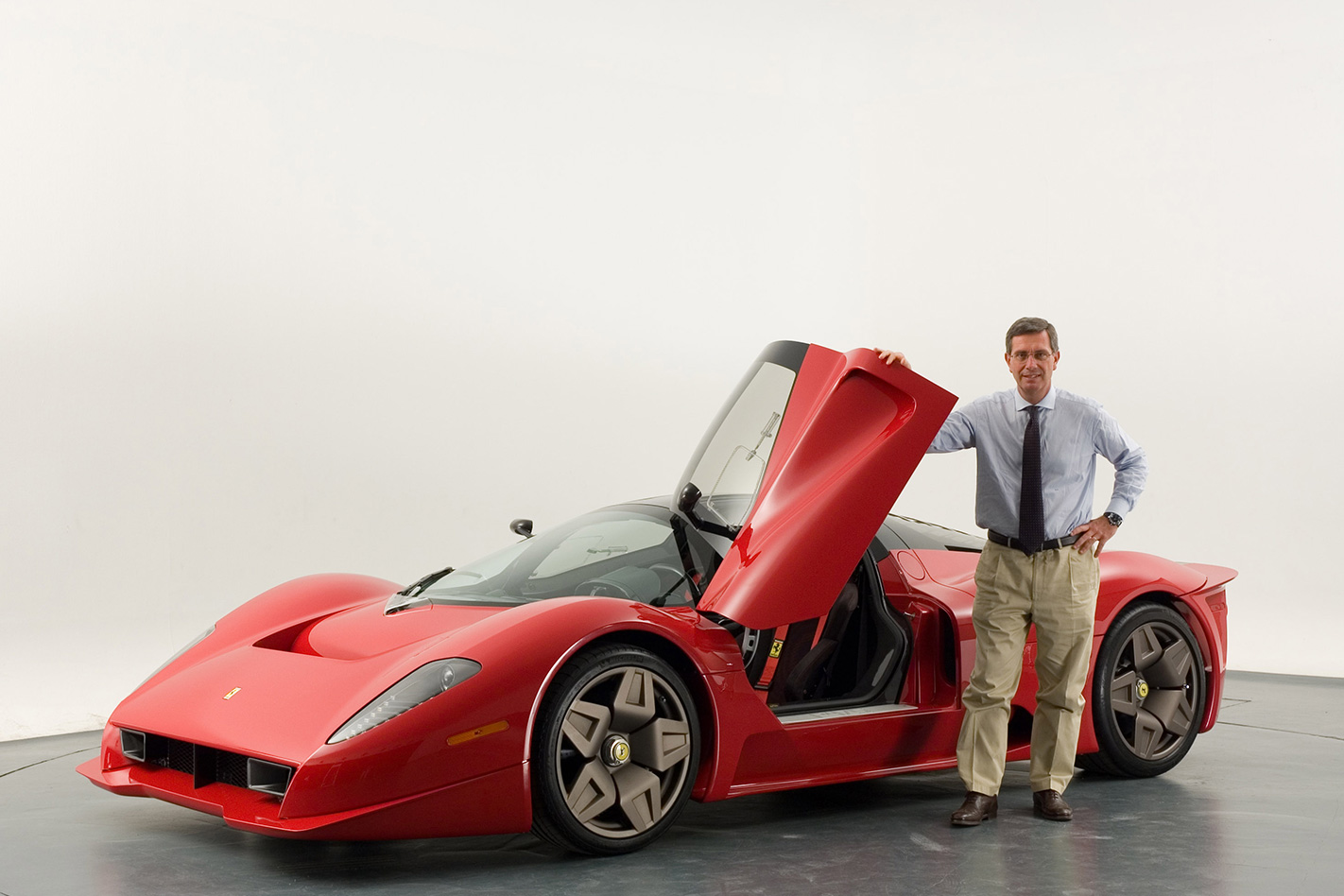
Happily, the one-off program was more successful.
“We started to go and contact hundreds of people around the world asking if they were interested in doing a one-off. In 2005-2009 we were doing one project every 18 months roughly. The first contract that was signed for one-off was the Kappa, then we did the P4/5, then we did another project for an American gentleman that remains a secret, then we did the [Rolls-Royce] Hyperion and finally the New Stratos.”
Through Pininfarina’s one-off program Garella would create lasting friendships. The first project, the 612 Kappa, commissioned by New York real estate mogul Peter Kalikow, led to another, the recreation of the Momo Mirage, a Chevy-powered, Italian-built grand tourer originally created by Kalikow in the 1960s.
The incredible P4/5, commissioned by American film producer Jim Glickenhaus, would forge an even stronger bond.
“The second person that responded positively was Jim and [he] came to us with the idea of doing a homage to the [Ferrari] P3/4. His idea was very much to do almost a replica of the P3/4 with a little bit of modern technology. But we steered his idea and we convinced him to do what then became P4/5.”
Using Glickenhaus’s brand new Ferrari Enzo as a base, designer Jason Castriota penned the styling which Garella and his team then turned into a fully functioning, road-registered supercar, the final P4/5 unveiled at the 2006 Pebble Beach Concours. Then-Ferrari president Luca di Montezemolo reportedly hit the roof when he learned Pininfarina was redesigning Maranello’s flagship supercar. But the success of the project is illustrated by the fact the completed car eventually received Ferrari’s blessing. To date, the P4/5 is the only Ferrari not to have been built by Ferrari.
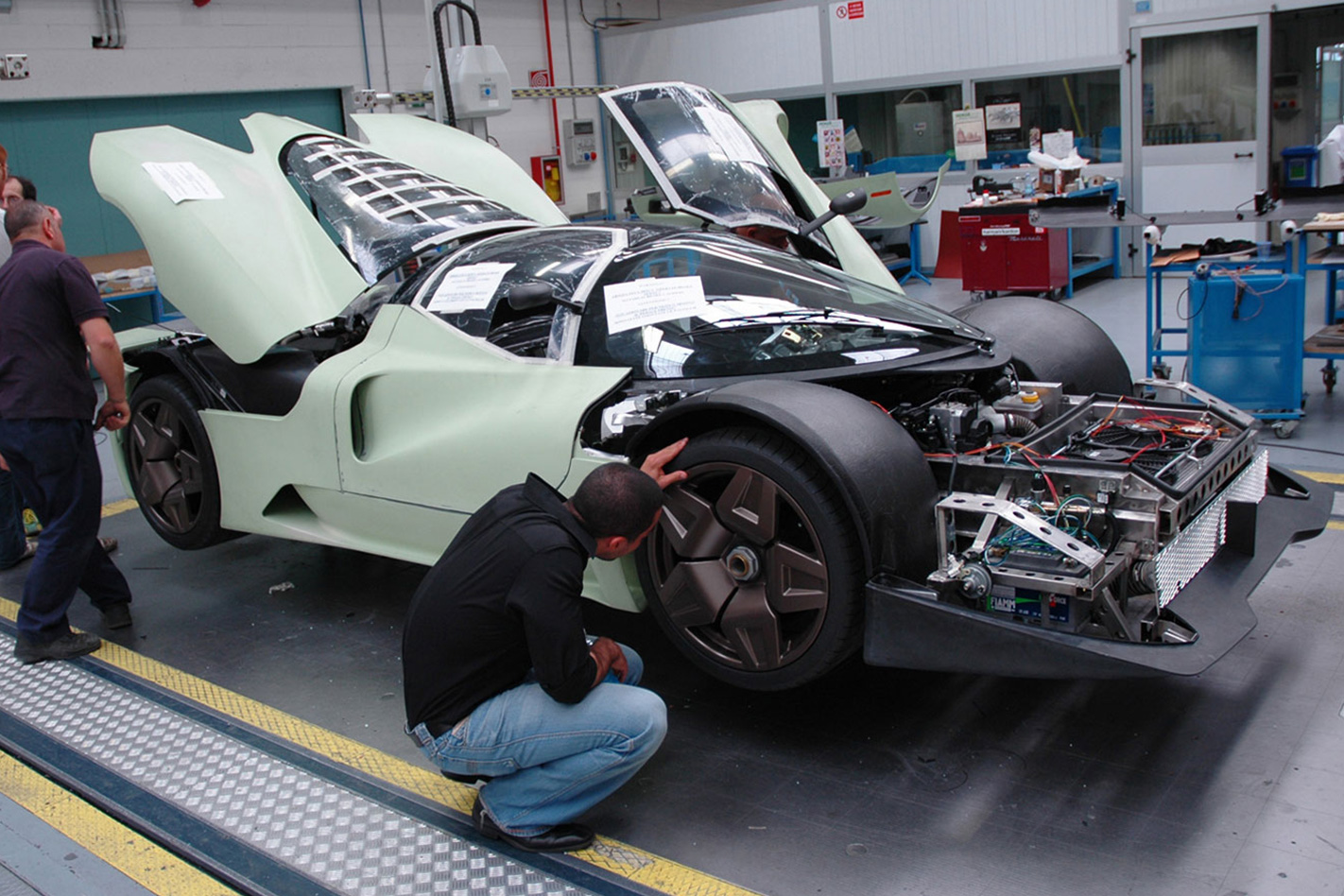
“I have to say P4/5 has been a little bit of a magic project. It’s one of these projects that happen once or twice in your life in which you’re able to put together a number of people who have a very high capability, they want to demonstrate something and, for different reasons, they love the concept.
On one side there was myself that wanted to show that this concept of one-off was working, and the chief stylist of it was Castriota who wanted to do a car inspired by the P3/4. The people in the workshop wanted to go back to the time of Brunei doing real cars, so there was a fantastic mix that transformed this project into one of the most famous one-offs anywhere in the world.
“Montezemolo when he saw the car said ‘ok, yes, you can put the Ferrari emblem, it is going to be good for the myth of Ferrari’.”
Pininfarina’s next project for Glickenhaus was the restoration of the one-off Ferrari 206 Dino Competizione, but Garella would soon be tasked with running the P4/5 Competizione race program. Based on a Ferrari F430 GT2, it found a home at the Nurburgring 24-Hour, where it had a troubled run to 39th place in 2011 but in 2012, fitted with a KERS hybrid system, finished an impressive 12th outright.
“For me, the P4/5 Competizione is a little bit of a transition. I managed the project and I got more and more involved managing even the technical solution through the development of the car. Originally the decision was to choose a company to do this car and managing the race. This worked a little bit the first year but already from the second year what we wanted was a little different to what was delivered so we decided to be completely independent and for this I founded MAT.”
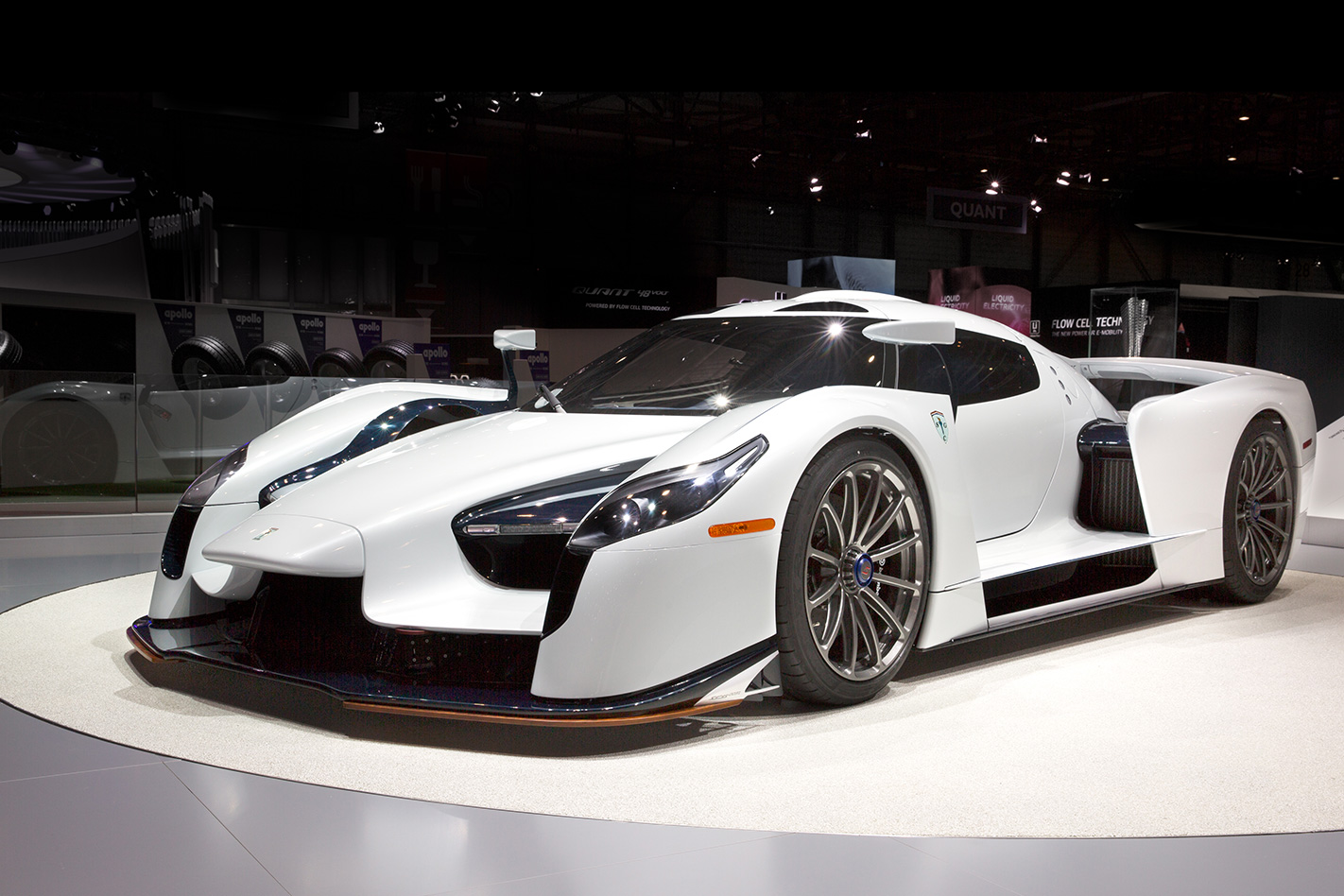
Manifattura Automobili Torino’s first project was the P4/5 Competizione’s successor, the Glickenhaus SCG-003, which was intended to not only be a race car but launch Glickenhaus as a supercar manufacturer.
“Let’s say that SCG represents all my career and history. There are a number of technical solutions – on the body, on the chassis, on the suspension but also in the process that was used to create the car – that are a little bit the apex of my career. I learned from the big manufacturers, the small manufacturers, the racing etc.
What I’m very proud of is the process we followed to do a car that was not only a race car but was the start of a new car manufacturer. I’ve been to hundreds of presentations in which the styling says ‘form follows function’ but I think there is no other road car that represents form follows function because that car was really conceived for a specific performance, to be the fastest car on the Nurburgring.”
The SCG-003 achieved its goal in 2017, securing pole position for the Nurburgring 24-Hour.
“The moment when we did the pole position at the Nurburgring with the SCG … was not only a technical achievement but a political achievement of an American guy with an Italian team beating the Germans at the cathedral of automotive in Germany, and this was very much a political work. When we met, Jim didn’t even know what the Nurburgring was or that there was a 24-Hour, and to be there and to be in front of the grid was amazing.”
MAT is also responsible for producing 25 units of the New Stratos, a car that started as a Pininfarina one-off.
“This was the last one-off project I did in Pininfarina. I did it half in Pininfarina, half as an external consultant. The idea came from a group of people but mainly from Michael Stoschek, a very famous customer that secured the Stratos brand and he is a Stratos fan.
Michael is a person that is incredibly demanding and he has incredible attention to detail, so the development of the car lasted for more than two years and he didn’t stop until it was right. Again it was one of these magic projects in which the stylist, the people involved etc. wanted to do something like this and you can see with the proportions, the surfaces, the technical solutions; these are things [done] not only because you have to do it but because you want something very, very special and unique.”
The New Stratos used the chassis and powertrain from the 430 Scuderia but was substantially re-engineered to be lighter, smaller and more powerful. The intended production run of 25 cars was kyboshed by Luca di Montezemolo, who forbade any Ferrari suppliers from supporting the project. Thankfully a decade later Ferrari has no such qualms and the New Stratos will reach production with the added joy of a six-speed manual option.
“The New Stratos is much lighter than the 430 Scuderia, it handles better, it has the Ferrari engine. All this was achieved thanks to Michael and a team of people who really wanted to create something very, very special.”
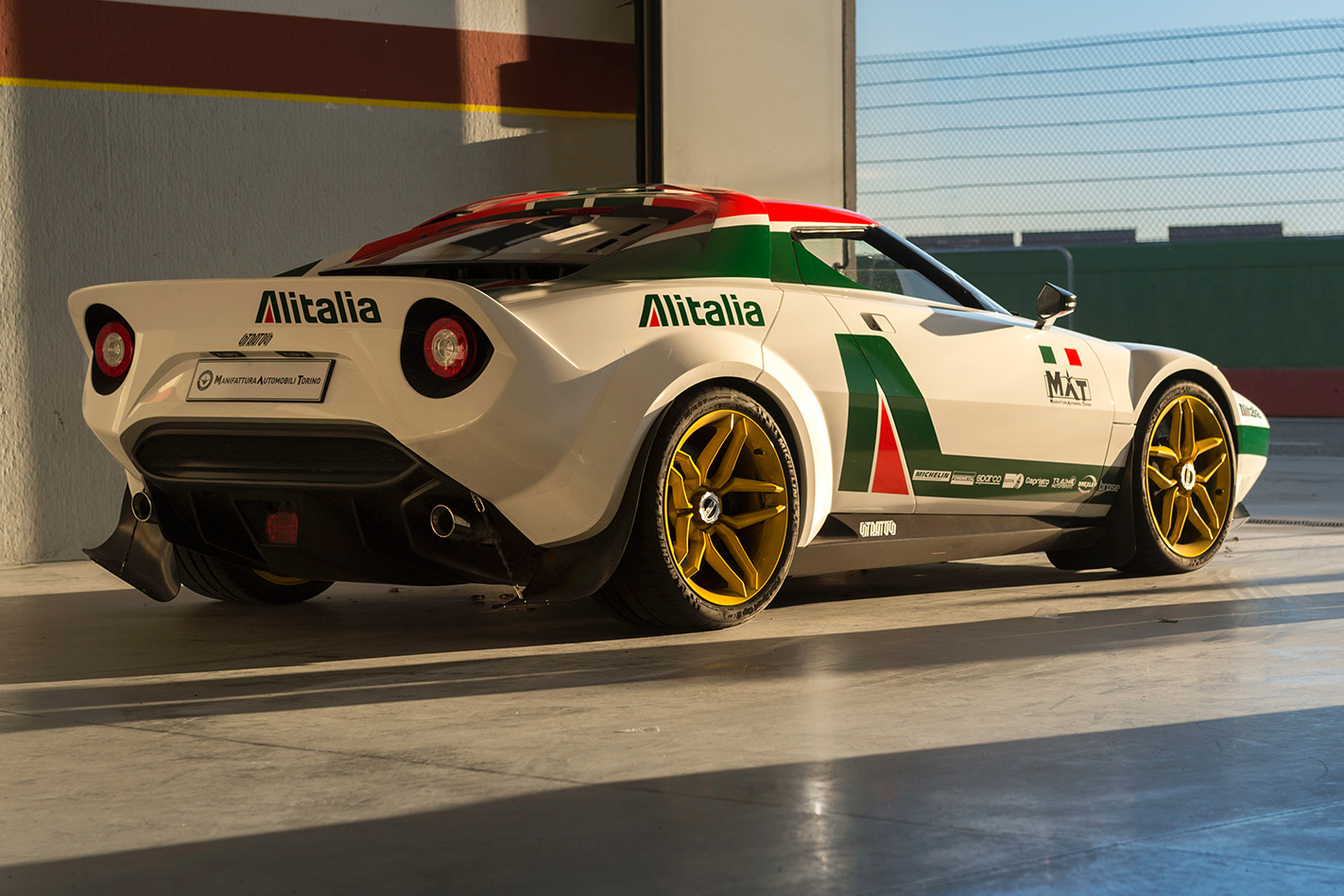
Garella describes MAT as “an accelerator”.
“Basically, a company or individuals that want to become a car manufacturer, we are able in one year, 18 months to give them a product. Then if they want, we can help them with the communications, the marketing and the sales. Then it’s up to them if they want to go on their own or if they want to still have us involved in the production and promotion of the car.”
It’s a role MAT first played with the Glickenhaus SCG-003 and has now repeated with the wild Apollo Intensa Emozione, a radically styled hypercar that makes a Lamborghini Aventador SVJ look a bit soft. It has a Ferrari-derived 6.3-litre V12 producing 582kW/760Nm in a 1250kg body that can also generate 1350kg of downforce at 300km/h. Just 10 will be built.
“There are projects like SCG which I consider very much our project. Then there are projects like the Apollo when we have a client that has a certain idea and asked us to interpret and realise – with a limited budget and very limited time – what he wants. For me, the importance of the Apollo is that after a bad experience in Germany, what he was not able to achieve in two years we deliver the first car in 12 months.
“It was very interesting from a process point of view with the time constraints we had. We did all the development, we did the two cars and then we deliver the tools and everything and they are doing the cars with a company in Germany.”
MAT’s latest project is another hypercar and yet couldn’t be more different. Whereas the Apollo used a naturally-aspirated V12 attached to a six-speed sequential manual and race car aero, the bizarrely-named Aspark Owl is powered by batteries and driven by a quartet of electric motors.
“Technically, the Aspark has been a fantastic challenge because the client came to us with a design and some very simple targets: the car had to be lower than a metre and they wanted to achieve this crazy acceleration. Frankly, when they came to us we saw all these other manufacturers like Rimac and Pininfarina declaring the same numbers but ‘ok we will be the last one and that’s fine, let’s do it’.
“After one year not only have we done it, we are the first one to do it. We have done 1.72sec 0-60mph and Rimac is announcing 1.85sec and we know that we can do better. We have done 350km/h and the only reason we haven’t been faster is that we are waiting for the sophistication of the tyres because our tyre limit is 350km/h.
“In an incredibly short time we have reached performance that other companies are talking [about for] years but they have not achieved yet.
“I would never have thought when I was in Brunei that I would develop a full-electric hypercar. Honestly I’m doing all these projects because I love driving cars and I have to say to drive these cars with this technology – the Owl has four motors, four gearboxes, torque vectoring, ESP, everything developed in-house by us, it has a centre of gravity that is lower than the middle of the wheels – it’s really an incredible thing to drive.”
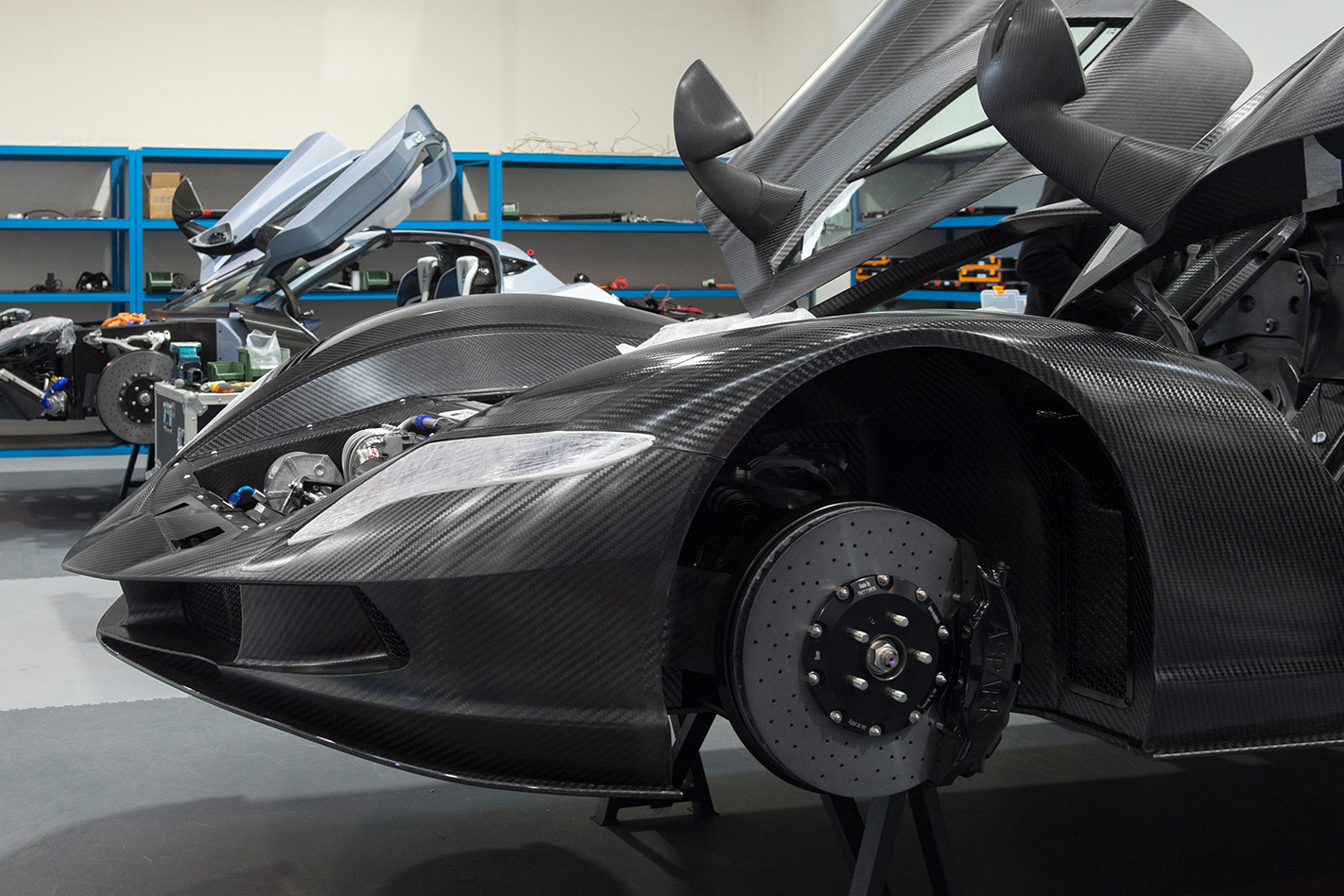
The Owl’s numbers are ludicrous. As well as the 1.72sec 0-60mph (97km/h) sprint, 0-300km/h is claimed to take just 10.6sec thanks to its 69kWh battery and quartet of electric motors producing 1480kW/2000Nm. I ask Garella if he can describe what it’s like to drive with such power:
“No. What’s incredible is with this electric motor you have the same [rate of change] in braking and acceleration and this is really what is completely different in these cars. It means that your tyres are always at the limit of grip. If you don’t drive you don’t understand. With these cars, you have so much torque and so much power that if you don’t have the electronic aids the tyres will just spin all the time. So the electronics actually make the car drivable.
“With the electronics, you can make the car oversteer, understeer, you can do drifting, you can do whatever you want. Your capabilities are more linked to managing those electronics because the electronics bring the car to the limit.
“The electronics drive the car, you really don’t drive the car.
“When you do the 0-100km/h you are not in control because [by] the time you push the pedal you can count, 1…2… you are at 100km/h. To be able to understand that performance you have to do it 20 times. I think this is interesting on this vehicle, [it gives] you the possibility to feel something that no other cars will give you in terms of feeling. This is what I think is interesting as an engineer and as a human being, to try something new and have something new to experience.”
Garella has ambitions beyond being an engineering gun for hire, however.
“We are in a very interesting moment, we are doing the Owl and we are discussing other projects. But for me, the next step is to build our own car for our brand. We were ready to show something to a limited number of people [at the Geneva Motor Show]. Unfortunately, Geneva was cancelled. But in this moment we are looking for investors. I’ve seen all these people coming and trying to enter the automotive world and I would like now to do it myself in the right way.
For this we need support and we need funding because to do a car is a big step and not only to do the car but to create a sales network and to grow and do our own thing.
We have a concept that is very, very special. It’s not the standard supercar. It’s a hybrid vehicle with incredible capability on-road and off-road, a vehicle perfect for Australia! The style is very unique and there are a number of features that I will announce that I think will make this vehicle very, very unique. It is not only a vehicle but a development of a number of systems that would be able to be used on other cars and that with a general approach this development of these systems should allow the company to grow and sell similar technology to other manufacturers.”
His energy and enthusiasm is infectious. Despite 35 years of incredible adventures, it’s clear that Paolo Garella still has a few automotive lives left to live.


